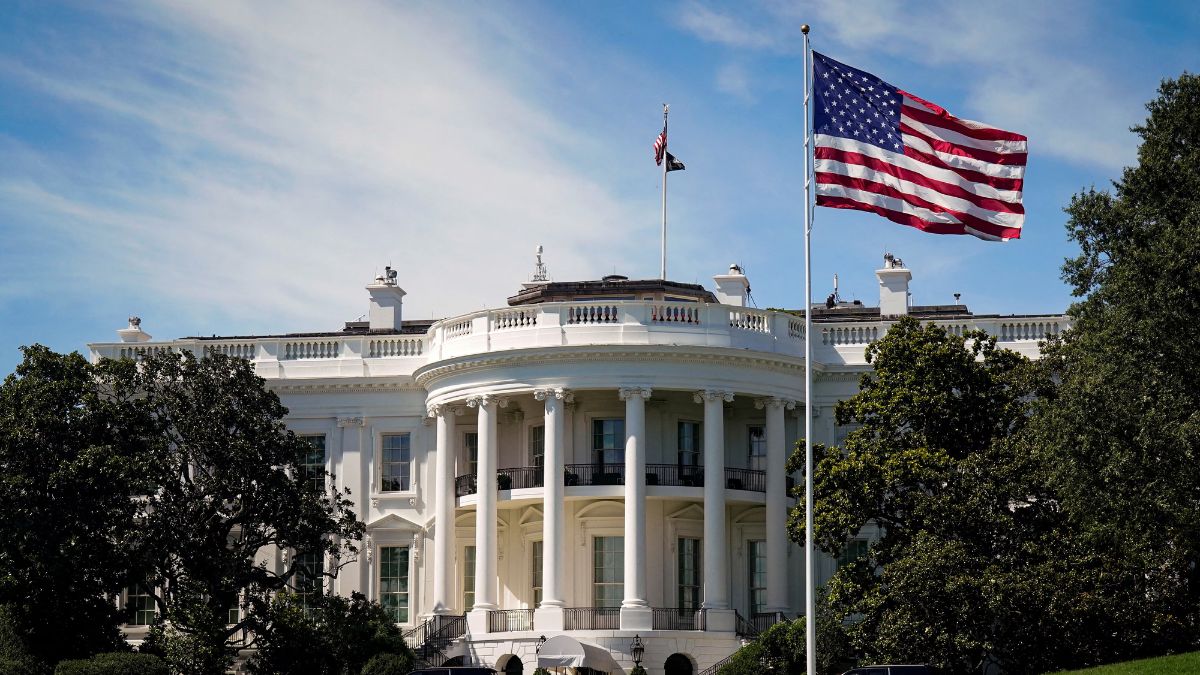The White House is one of the most iconic buildings not just in the United States but in the world as well. But most people do not know that it was not always known as the White House. Until October 12, 1901, the place was called the Executive Mansion. It was renamed as ‘White House - Washington’ by then-President Theodore Roosevelt.
If you are a history geek who loves to learn about important events from the past, Firstpost Explainers’ ongoing series, History Today will be your one-stop destination to explore key events.
On this day in 1960, Soviet Premier Nikita Khrushchev shocked the world during a session of the United Nations General Assembly by brandishing a shoe and pounding it on his desk. Moviegoers were introduced to one of the most beloved and enduring works of speculative fiction - Douglas Adams’ The Hitchhiker’s Guide to the Galaxy in 1979.
Here is all that happened on this day.
The Executive Mansion became the White House
In 1901, the official residence of the US president, long known as the Executive Mansion, was formally renamed the White House by President Theodore Roosevelt. Though the building had been affectionately referred to as the White House for much of the 19th century, Roosevelt’s decision made the title official and symbolic of the modern presidency.
The mansion’s name originated from its distinct white-painted sandstone exterior, which was completed in 1798. Construction of the building began in 1792, following a design competition won by Irish-born architect James Hoban. President John Adams became the first to occupy the residence in 1800, while Thomas Jefferson oversaw its expansion with the addition of colonnades.
It was burned by British troops in 1814 during the War of 1812, and later restored under Hoban’s direction. The structure has since evolved through renovations and expansions to accommodate the growing needs of the presidency, yet it retains its original neoclassical elegance.
Impact Shorts
More ShortsPresident Roosevelt’s renaming was part of a broader effort to modernise and professionalise the executive branch. He ordered new stationery bearing the “White House — Washington” letterhead, replacing the older “Executive Mansion” inscription. This rebranding helped strengthen the building’s identity as a symbol of democracy, power, and continuity for the American people.
Khrushchev brandished shoe at the United Nations
In one of the most shocking incidents at the world stage, Soviet Premier Nikita Khrushchev brandished a shoe and pounded it on his desk during a session of the United Nations General Assembly on this day in 1960. The incident occurred amid heated debates on the Cuban Revolution, decolonisation, and Cold War tensions, highlighting Khrushchev’s fiery personality and the escalating ideological conflict between the United States and the Soviet Union.
The dramatic episode reportedly unfolded after Philippine delegate Lorenzo Sumulong criticised Soviet policies in Eastern Europe and accused Moscow of suppressing democracy. In a display of anger and theatrical defiance, Khrushchev reportedly removed one of his shoes, waved it in the air, and banged it on the desk, demanding that his voice be heard. Accounts differ on whether he shouted, “We will bury you!” or simply slammed the shoe, but the event became a lasting symbol of Cold War theatrics.
While some witnesses described the act as a spontaneous outburst of frustration, others suggest it was a calculated political gesture meant to assert Soviet authority and intimidate Western delegates. The incident quickly made international headlines, capturing the imagination of the global public and the media. Newspapers around the world ran photographs and cartoons of Khrushchev waving the shoe, turning it into an enduring symbol of his brash leadership style.
‘The Hitchhiker’s Guide to the Galaxy’ hit the bookstores
One of the most iconic works of speculative fiction, Douglas Adams’ The Hitchhiker’s Guide to the Galaxy was first published on this day in 1979.
Adams’ tale follows the hapless human Arthur Dent, who is swept off Earth moments before its destruction to make way for a galactic freeway. Alongside his alien friend Ford Prefect, Arthur travels through space encountering bizarre civilisations, bureaucratic nightmares, and the infamous answer to the ultimate question of life, the universe, and everything: 42. The novel’s unique combination of satire, philosophy, and wit sets it apart from traditional science fiction, appealing to both genre enthusiasts and casual readers alike.
Upon its release, the book was praised for its cleverness, originality, and the way it subverted conventional narrative expectations. Adams’ writing style, blending dry British humour with cosmic absurdity, quickly gained a devoted readership, leading to sequels, adaptations for radio, television, stage, and film, and a lasting influence on pop culture. Phrases like “Don’t Panic” and references to the Babel fish entered the lexicon of sci-fi fans worldwide.
Beyond entertainment, the book also offered subtle critiques of bureaucracy, technology, and human nature, making it both humorous and thought-provoking. Its enduring popularity can be attributed to Adams’ visionary imagination, memorable characters, and the way he captured the wonder, confusion, and absurdity of existence.
This Day, That Year
Equatorial Guinea gained its independence from Spain in 1968.
In 1810, the first Oktoberfest was celebrated in Munich.
The New World was ‘discovered’ on this day in 1492 when land was sighted in the Caribbean.
)